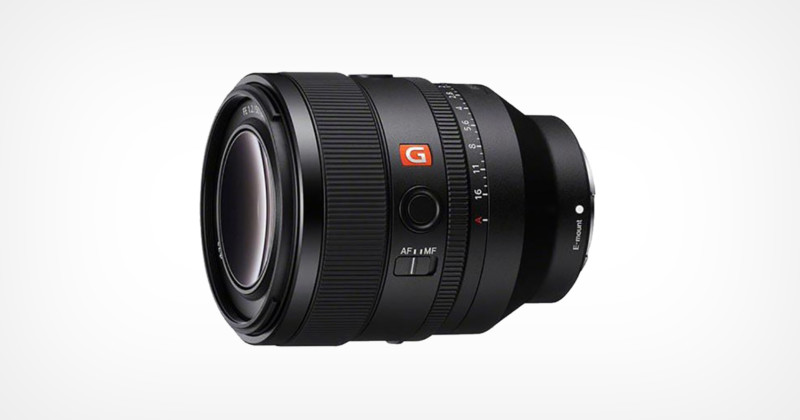
Sony has announced its 60th E-mount lens — the 50mm f/1.2 G-Master — that it hopes will prove that not only can it continue to make compact, lightweight primes but also can also do so while competing with the fast aperture lenses of both Canon and Nikon.
One of the more prominent talking points that emerged when both Canon and Nikon announced the RF-mount and Z-mount and in comparison to the Leica L-mount was that all three were superior to E-mount because, supposedly, Sony never designed the E-mount for full-frame. This statement was originally made by Leica’s Stephan Schultz and seemed to spread more quickly than it could be debunked. Which, by the way, Sony did in 2019.
As if to build on that, Sony’s 50mm f/1.2 G-Master manages to combine the wide-open aperture of f/1.2 with a compact and lightweight design that’s essentially the same size and weight as the Zeiss Planar T* FE 50mm f/1.4 ZA: It’s the same length, same width, and a half stop faster.
The lens’s size is thanks to two main factors: 1) The focusing system in place and 2) the lens elements used.
When compared to Canon and Nikon’s 50mm f/1.2 lenses, each attempts to tackle focusing in different ways. Canon uses a rotational ultrasonic motor (USM) that will actually physically move larger lens elements back and forth (this is visible on the front of the lens). Nikon’s system is to use an internal focusing system based on a rotary stepping motor.
Sony says that both these systems are inferior to its linear actuator focusing system that it has been using in its more recent high-performance G-Master lenses. The company claims that its four extreme dynamic linear motors (XD linear actuators) provide the high thrust efficiency needed to accurately position the lens’s two large focus groups in a floating focus mechanism controlled by its dedicated lens drive algorithm. These actuators also contribute to a quiet focus drive.
Because of that motor, Sony can promise a 100% hit rate with an inch depth of field at up to 30 still frames per second. It can also shoot at 120 frames per second in 4K without missing focus as evidenced by clips showed to PetaPixel during a briefing. It should be noted that these are in ideal scenarios and Sony doesn’t promise this will happen every time, flawlessly, but the fact that these benchmarks can be hit at all is still impressive.
The lens is constructed of 14 elements in 10 groups, three of which are extreme aspherical elements (XA) that Sony says minimize aberrations, allows the lens to maintain sharpness and clarity from the center to the edge, and as mentioned contributes to the lens’s small size. It has a minimum focusing distance of 0.4 meters (~15.75 inches) with a maximum magnification of 0.17x.
The Sony 50mm f/1.2 G-Master weighs 778 grams, which is notably lighter than Canon’s 50mm f/1.2 which weighs 950 grams and Nikon’s 50mm f/1.2 which weighs 1090 grams.
Sony claims that its competitor 50mm f/1.2 lenses, namely those made by Canon and Nikon, are less effective at maintaining contrast out to the corners than this lens can (based on MTF charts). In example images shown to PetaPixel, the level of sharpness at the center of an image was only slightly better with the Sony, but the edge performance was noticeably better. Sony says that its Nano AR Coating II effectively minimizes internal reflections so that flare and ghosting do not occur.
The defocused areas are smooth thanks to a newly-developed 11-bladed circular aperture, and the aforementioned XA elements suppress “onion ring” bokeh that is sometimes visible in lesser quality optics.
As is normally found on Sony optics, the 50mm f/1.2 G-Master features a de-clickable aperture, programmable focus control buttons, a fluorine front element coating, and a focus mode switch.
The Sony 50mm f/1.2 G-Master will be available on May 13 for $2,000. Additionally, when asked about possible supply chain issues, a Sony representative assured that there are no current challenges in manufacturing and that there should be enough units to meet demand.